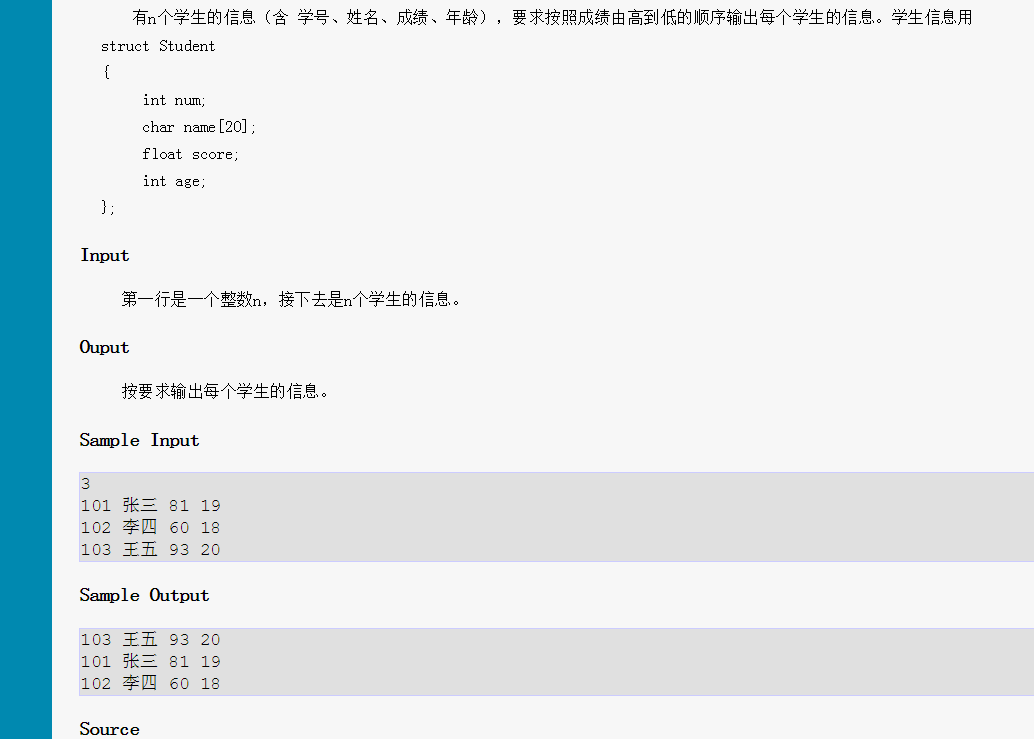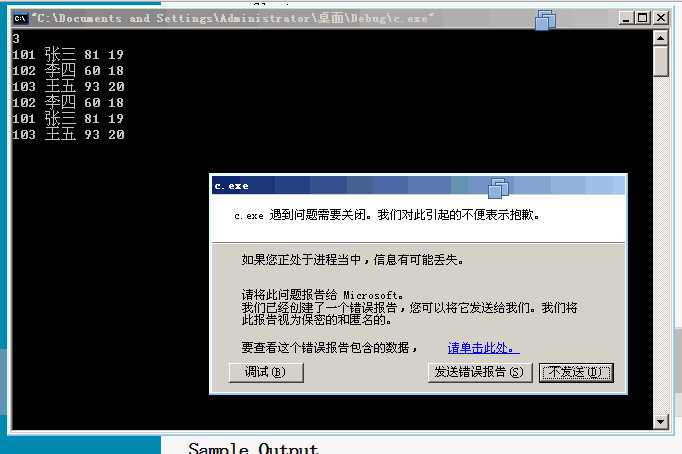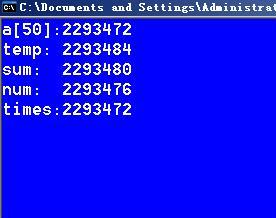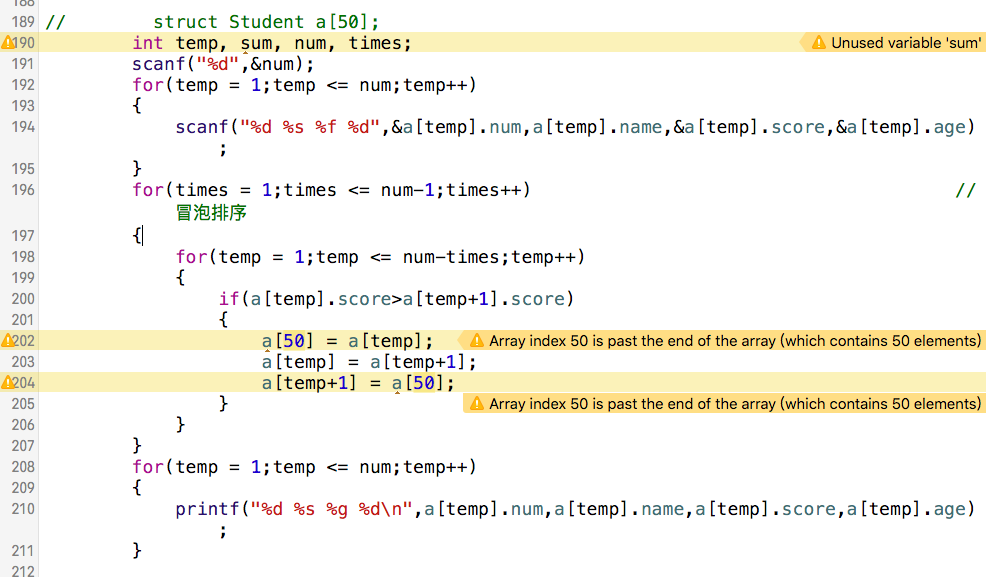69,371
社区成员
 发帖
发帖 与我相关
与我相关 我的任务
我的任务 分享
分享
#include <stdio.h>
struct Student
{
int num;
char name[20];
float score;
int age;
};
void main()
{
struct Student a[50];
int temp, sum, num, times;
scanf("%d",&num);
for(temp = 1;temp <= num;temp++)
{
scanf("%d %s %f %d",&a[temp].num,a[temp].name,&a[temp].score,&a[temp].age);
}
for(times = 1;times <= num-1;times++) //冒泡排序
{
for(temp = 1;temp <= num-times;temp++)
{
if(a[temp].score>a[temp+1].score)
{
a[50] = a[temp];
a[temp] = a[temp+1];
a[temp+1] = a[50];
}
}
}
for(temp = 1;temp <= num;temp++)
{
printf("%d %s %g %d\n",a[temp].num,a[temp].name,a[temp].score,a[temp].age);
}
}
#include <stdio.h>
struct Student
{
int num;
char name[20];
float score;
int age;
}a[50];
typedef struct Student
{
int num;
char name[20];
float score;
int age;
}Student;
Student a[50];




struct Student a[50];int temp, sum, num, times;